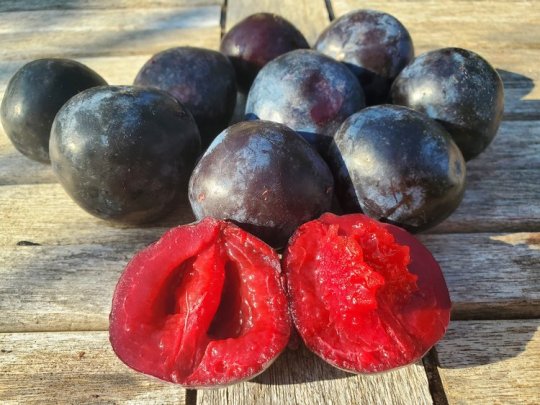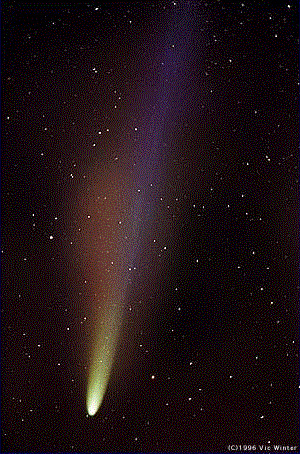#cyanogenic
Explore tagged Tumblr posts
Text

"MOM THE SKY IS FUCKING EXPLODING-"
"Bug, those are fireworks."
#in other words: happy new years lol#pink corruption#the pink corruption#tpc#tpc bug#oc: bug#tpc hexalace#oc: hexalace#tpc gold#tpc orange#tpc tsavorite#tpc cyan#tpc cyanogen#<- i refuse to call her Te*l.
46 notes
·
View notes
Text
Hai!!! shares my evil hcs...






#jsab tpc#pink corruption#jsab#tpc#brittcorruption#the pink corruption#pookanide made me post this#pls dont bite me#the pink corruption heroes#tsavorite tpc#gold tpc#orange tpc#cyan tpc#cyanide tpc#cyanogen tpc#tsavorite was here
25 notes
·
View notes
Text


Have a Cyanide/Teal/Cyanogen edit (she won the fucking showdown, she DESERVES ONE /silly)
ALSO FINALLY CAPCUT REAPPEARED ON MY TABLET :GRINS: :GRINS: :GRINS: :GRINS: :GRINS: /SILLY
Audio here
#tpc#the pink corruption#brittcorruption#tpc teal#tpc cyanide#tpc cyanogen#tpcblur#capcut#cyanide my beloved /sillyj
26 notes
·
View notes
Text
whiteboard doodles im proud of

gun cw under cut

#the pink corruption#hi#i eat kids#tpc#cyan tpc#cyanide tpc#or cyanogen#we don't call her teal in this household
18 notes
·
View notes
Text
"There is not a single word in my database that could describe the amount of hatred I feel towards you, Dub."
She says 'Dub' like she expects it to hurt.
#concept thing for one of Cyanogen's TIO dialogues in BugVerse :D#its very small ik but its there 👍#lore irrelevant#bugverse#the pink corruption#concept
8 notes
·
View notes
Text
Coming up with OC lore. I forgot about the ramies (cute way of saying ramifications)
#Speak.#Off grumblr i have this lime guy who uses spray cans filled with. i think cyanogen specifically but any blood weapon.#because haha guy with lime blood with the blood weapon#but Oh God.
0 notes
Note
so, after the reaction of cyanogen and triangle to my last question about spikes, I was wondering how they are right now. (thanks for clarifying the full names, I appreciate it)

they're trying to forget about it
57 notes
·
View notes
Text

Ooray
(davidsonia pruriens)
Also known as Davidson's plum or Queensland Davidson's plum
As one of the names implies, these plums grow in the rainforests of northern Queensland, Australia, with ooray being the indigenous name of the fruit. The flesh is beautifully bright and its supposed sour, acidic yet tangy flavour lends itself well for use in jams and preserves as well as fermented drinks. They can be enjoyed raw, though there have been reports of vomiting and epigastric pain after consuming the fruit due to cyanogenic glycoside in its kernel (which converts to hydrogen cyanide when chewed, a commonality in stone fruits) so I would advise you to be careful when eating these out of hand! The earlier these fruits are harvested, the more sour and astringent they are, so the timing of harvest is important. As it develops and ripens, it becomes larger, juicer and eventually it mellows the sour to a more sweet flavour.
Two other varieties of Davidson's plum exist, the mullumbimby plum (davidsonia jerseyana), which can be found northern New South Wales and the smooth Davidson's plum (davidsonia johnsonii), a rare variety from the subtropical New South Wales rainforests.
🍇 Reblog to share a fun fruit and to increase sample size! Check out even more interesting fruits here or in the list of all polled fruits. 🍇
24 notes
·
View notes
Text
Official Time Loop Post




653 notes
·
View notes
Text

think i went a little overboard with effects ? :thonk:
25 notes
·
View notes
Text
Fuck it, why not end out the year with some TPC headcanons :] (but only the characters I have headcanons for)
Cube:
Half-monster, freakishly tall and strong (even by cube standards) because of it
Has a rather soft voice, you know when he’s angry because that softness goes outta the window
He’s muscular, but not in the dehydrated “sexy” sense, but in the actual strongman sense
WILL crush your back in a hug
Iris:
Posh twat /aff
Morally questionable at the beginning, gets sense knocked into him and is now trying to unlearn some harmful rhetoric he learned growing up
Paradise’s most hated man /hj
Malewife
Seems like he’d be a tea drinker only, actually prefers coffee
Wasn’t revived by Calcifer/The Reaper, was instead revived by Prism/the Trees due to being needed as a caretaker (Calcifer refused to revive him)
Pentellow:
Southern. She’s southern you can’t convince me otherwise
The only competent caretaker
Lowkey shit at cooking, can make a mean apple pie though
Reckless due to the natural polygon durability boost, worries the shit out of the others on a daily basis
Likes dirt
Girlboss (if Iris is the malewife she’s the girlboss I’m sorry)
Pyrare:
Kind of a cryptid, will appear behind you ominously and scare you when he asks if you want casserole for dinner
Aromantic, but not asexual (I mean. Britt never said anything about his sexual orientation, just his romantic one, so I can hc him as aroallo if I want) (besides, he’s got a canon son lmao)
Likely autistic, but has lived for longer than the concept of autism in society so therefore he can’t possibly have it (he very much can)
Very flat voice, rarely has tonal changes unless he’s like. Really feeling an emotion
Ajacent:
Gossip machine, will find out the latest tea and spill it to her friends
Doesn’t live in the mountains anymore and doesn’t communicate with her sisters often either (hmm I wonder why)
Not a fan of the heroes, she finds them a little too child-like (she’s not a fan of children in general)
Circubit:
Fat and proud of it <3
Really good at playing the piano thanks to his mother, though he prefers an electric keyboard
One of Ajacent’s gossip buddies
Does not like Lythorus due to Lycanthropy being the most unlikeable fucker in existence (Lyth is better in that regard but Circubit still hates him lmao)
Learning robotics purely to maintain Cyanogen (Cyanide)’s body, gets frustrated with it easily
Gold:
Snake boy (hc adopted from MugzyMiik/October)
Has a small hiss to his speech
Takes after Pyrare in being the cryptid of the heroes
Likes fluffy things :3
Tsavorite:
Literal embodiment of :3
Impossible to hate, he’s too nice to everyone
First hero to truly bond with Cyanogen
Learning some recipes left over by Pentellow’s mom (she can’t cook but he can)
LOVES pie, no matter if sweet or savoury (though he’s particularly fond of cheese and onion pies)
Orange:
Nicknamed “grapefruit” by Iris, only lets him, Pente and Tsav call him that
The most laid back of the heroes
Has very fluffy hair under his hat
A little protective of Tsav (they’re brothers don’t take this the wrong way)
Has a sweet tooth
Cyan:
Filled with RAGE
Cube has to stop him from fistfighting Dub on a near daily basis
Annoying lil shit
Still wary of Cyanogen, hasn’t taken the time to bond with her
Lowkey racist towards pink shapes even though they’re harmless and natural now
Desperately needs a reality check
Cyanogen:
Wants to bond with Cyan, but is scared of him
Has at least 4GB of memes downloaded onto her, will rickroll you at any given opportunity
Cheeky, likes to pull pranks
Changed her name from Cyanide because she didn’t want to be named after a literal poison anymore </3
Caretaker is Circubit :3
#the pink corruption#brittcorruption#tpc#tpc cube#tpc pentellow#tpc iris#tpc pyrare#tpc ajacent#tpc circubit#tpc gold#tpc tsavorite#tpc orange#tpc cyan#tpc cyanide#idk why I tagged everyone lmao
38 notes
·
View notes
Text
Collection of TPC Headcanons I have PT 3
Barracuda did pottery a lot when he was alive. It was something he enjoyed as it was both an art form and something he had to calculate. Most dishes (if not all of them) that Pyrare has are things made by Barracuda. Barracuda had made a lot of pottery things for Dub too, but most either were destroyed or reclaimed by Pyrare.
Barracuda is now a ghost that kinda just haunts other shapes. To be able to move between which shape he haunts, they have to be physically close to each other for him to transfer between who he’s haunting.
Pentellow holds a silent resentment towards Cintagon. She’s been trying to get to know him and understand his reasoning for deciding not to raise her, but she wishes that he had just ignored anyone else’s input and had just raised her anyways. She feels like she would’ve become a caretaker no matter what, which just discreetly adds to her silent resentment towards her own father not raising her.
Iris was almost definitely an only child. And due to being an only child, he absolutely freaks out whenever Orange and Tsavorite start having sibling quarrels and such cause he thinks they’re actually fighting. Pentellow kinda just dismisses their sibling fights, assuring Iris that it’s probably normal and nothing to worry about.
Cyan hates Lythorus with a burning passion. It’s not that Cyan hates him as a person, it’s that Cyan hates the fact that Lythorus seemingly has feelings for Cube and Cyan feels like Lythorus does NOT deserve Cube.
Barracuda possesses Cyanogen (I refuse to accept her uncorrupt name is Teal 😭) frequently, whenever she allows it. He really only does this when he wants to bicker with Gold and make sure Gold can actually hear him and all.
Orange and Tsavorite both gang up on Iris and bully him for being bald. I mean, it’s a requirement to lovingly bully your dad/caretaker, honestly. /silly
Barracuda is kinda unhinged as a ghost now that he isn’t held back by any expectations or precautions and stuff. Like, he still talks in his formal-ish way that he always has, but he’s just more chaotic now.
#constellation rambles#the pink corruption#JSAB TPC#brittcorruption#pink corruption#tpc au#TPC headcanons
24 notes
·
View notes
Note
Benedict smiled despite himself and hugged John tightly in return.
“Benedict. I baked you stuff” :3
@askjohnandre
Thank you, John! 😁
Is the wedding back on or no?
#mint tea is so good#you have to be careful with clover tea tho bc pink clover and stinking clover irritate the mouth#and white clover and yellow clover is dangerous in large amounts#you should generally prepare white clover tea directly after picking it bc otherwise it releases cyanogenic chemicals#and cyanide isn’t good for you
38 notes
·
View notes
Text
my thoughts on the whole cyanide situation
hi as cyanides 1# fan i am required by law to make a post about this/HEVJ also like half of this is copied and pasted from discord because i am NOT rewriting all that/SILLY also sorry for any spelling mistakes:(
SPOILERS AHEAD
anyways, if ill be 100% honest, i kind of dont like the fact that cyanide was purifed/uncorrupted. it was one of her most unique traits and i hate how that was just, boom, taken away from her just like that
they also didnt really have to uncorrupt her, she isnt hostile and pretty much harmless as long as she dosent touch the chest shape doohickey whatever those are things, as seen in episode 9, where she sat on the couch and did not corrupt it at all, and when tsavorite held her along with the other heroes who were quite literally squished together and nobody got hurt
as seen here, cyanides ONLY time corrupting something which in this case is circusic, by just touching his chest thingy

and as i mentioned, tsavorite held cyanide on the way to the poly forest, along with cyan and gold who were squished against her, and not getting hurt at all, which quick recap for a sec heroes cannot get corrupted, whenever the corruption/anything corrupted touches them they get hurt, which in this case nobody is

and i have a bit more examples but i think these are enough unless yall want more
ANYWAYS, onto the purification and maturing, THE DISAPPOINTMENT I FELT. THE DISAPPOINTMENT. i cannot stress enough how much i PRAYED this wouldnt happen, but brittany always proves us wrong and gets our hopes up one way or another
but dont get me wrong, i adore her design! its cute, sure, but it was WAAAYYYY too early to pull the purification card on cyanide, it couldve waited a few more episodes, or seasons... or just never (this could be biased but STILL) cyanide had SO MUCH potential as a character but just POOF!!! GONE!! BUUUUUUT i absaloutely loved the bossfight tho, absaloute banger 10/10
and as for the name, i dont really know how i feel about it. its supposed to be similar to cyan, sure, but it just... dosent really fit her if ill be honest. ive seen some cool alternitives like Skye and Nithiodote (which honestly i might start using whoever thought of that you deserve a gold star), and also the one i came up with, Cyanogen. (which im really proud of myself for that:3) but overall its a pretty nice name for her, she chose it herself so at least shes happy
and now the actual design, its adorable, ill agree on that one, but its kinda... too much for a hero?? it dosent really scream "hero" to me, and i dont know if im the only one who thinks this though, like.. its kind off tacky and makes her look out of place in a way and im really sad about that
ALSO ONE MORE THING, can i say she was SSUUCCHH good angst material?? we never really got to actually get to know her better, all we know shes a naive, (used to be) corrupt that wants to be a hero and also is a robot, we dont really get to dive into her actual personality and thats what i was hoping this episode will be if ill be honest
anyways i ran out of things to write so yap over everyone go home/SILLY feel free to correct me im open to criticism:)
#the pink corruption#cyanidetpc#i eat kids#hi#tpc#pink corruption#brittcorruption#jsab tpc#skibidi toilet rizz
33 notes
·
View notes
Text

The Tails of Comet Hyakutake - May 2nd, 1996.
"What makes comet tails so colourful? This photograph of Comet Hyakutake was taken on the night of April 18th, 1996, and highlights different components of the tail. The gold and red tail features are dust, made predominately of little bits of rock and carbon. The dust tail shines by reflecting sunlight. Extending past the dust tail is the comet's ion tail, shown here glowing in blue. The ion tail is composed mostly of ions of water, carbon monoxide, and cyanogen. The ion tail glows by emitting light when elections recombine with electrically charged ions to make uncharged molecules. The photograph was taken just north of Kansas City, Missouri, USA."
70 notes
·
View notes
Text
y'know what. im gonna officially say it.
the Heroes in BugVerse have a few small cat-like traits. all of them. which trait(s) varies but its left over from their Kitstate 😁 (<- autistic furry)
Bug has a habit to loaf when content
Gold's eyes slit when hes intimidated/angry/whatever (alongside the Cobra-Ish Floomf yea)
Orange's hair fluffs out when surprised/scared/angry/whatever (which is why he wears his hat a lot)
Cyan straightup growls
Tsavorite has a tendency to just, bite. bite and gnaw. randomly.
Cyanogen is Cyanogen

also based on this
slightly unrelated video ^
#pink corruption#bugverse#because of course its cats#/silly#lore relevant#character relevant#worldbuilding
18 notes
·
View notes